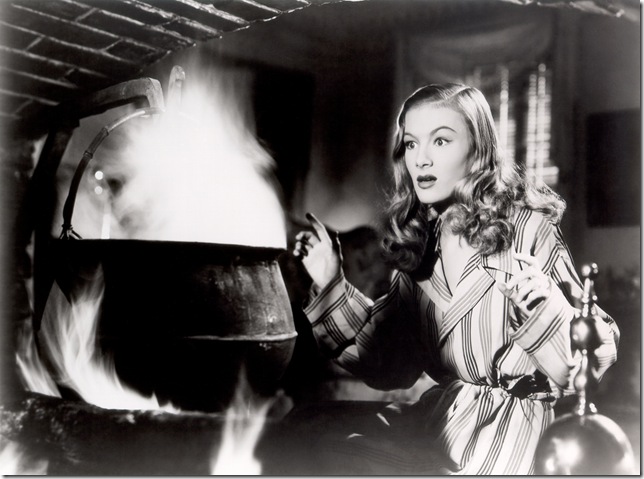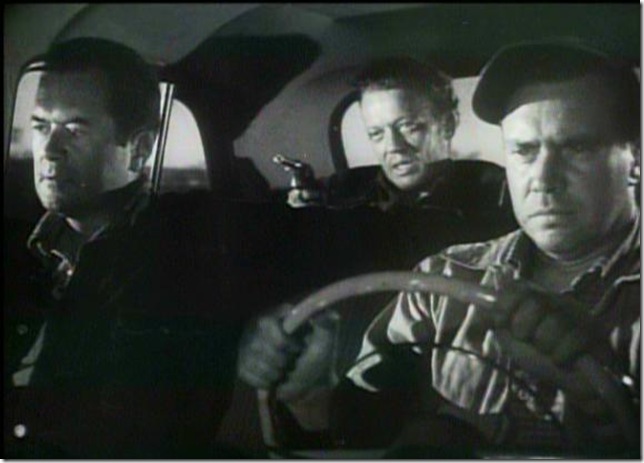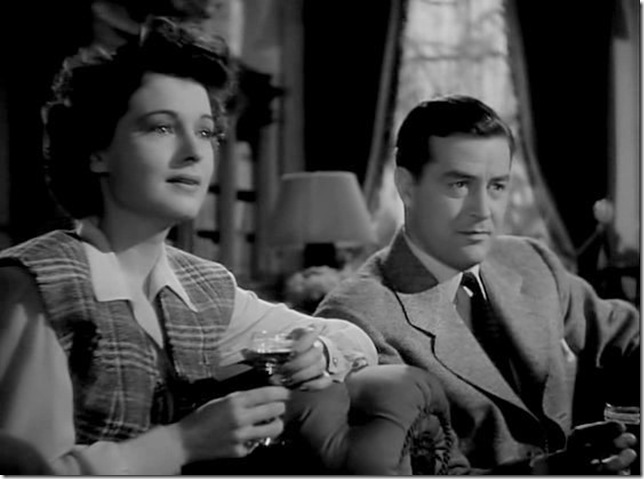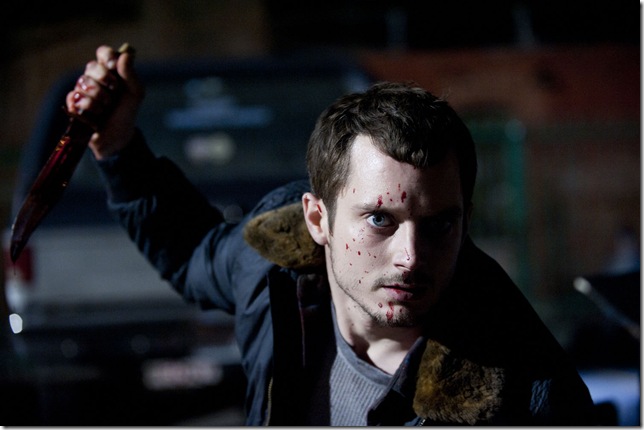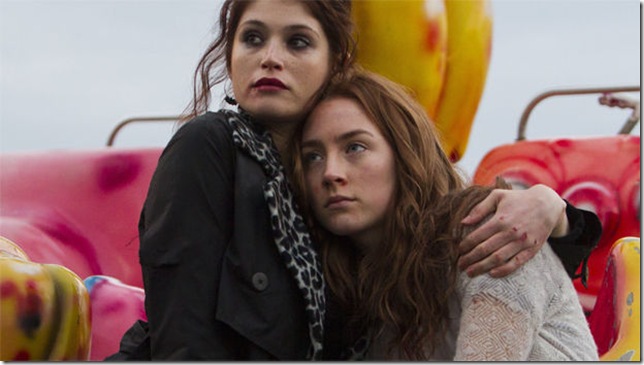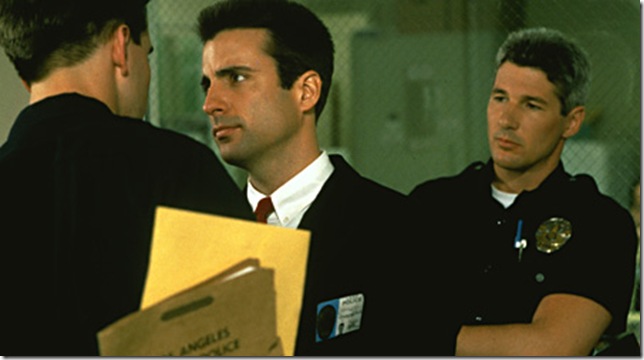I Married a Witch and Beauty and the Devil: Given that these two titles were released just in time for Halloween, it’s hard to resist the sort of wordplay that writes itself: In René Clair’s I Married a Witch and Beauty and The Devil, cinematic tricks make for a pair of delectable audience treats.
These two gorgeous transfers help solidify the reputation of one of France’s most under-appreciated pre-New Wave directors, an unassuming auteur who was one of the first filmmakers to exploit sound to its full potential, in experimental musicals like Le Million. These two features came later, and while one was a Hollywood studio comedy and the other a French-language literary adaptation, both feature the director’s trademark sensibilities and command of aural texture — and both happen to center on supernatural entities that wreck havoc on the lives of flustered mortals.
In I Married a Witch (Criterion, $20.69 Blu-ray, $14.49 DVD), released in 1942, Veronica Lake plays the irrepressible spell-caster, unearthed from a 270-year burial after lighting strikes the oak tree built on her gravesite. Her sorcerer father is exhumed as well, and for a while they drift across the town without bodies — just plumes of smoke that, in one of the film’s many hilarious visual gags, coast across the sky on a superfluous broom. Eventually, “Jennifer,” as she calls herself, manifests the body of Lake inside a burning hotel just in time for Wallace Wooley, a gubernatorial candidate played by Frederic March, to save the beautiful blonde damsel.
For Wooley, she’s a breath of bizarre but fresh air after suffering the constant complaints of his politically well-connected but surly fiancée (Susan Hayward). Unfortunately, Jennifer only exists to continue a centuries-old curse on the Wooleys — at least initially.
This is a deft and unforgettable screwball comedy, with a cynical approach to politics that jibes with the acerbic sensibilities of a Brackett and Wilder script; in its funniest sequence, Jennifer rigs the race for Wooley in election fraud so blatant it makes the Palm Beach County voting ballots of 2000 look on the level.
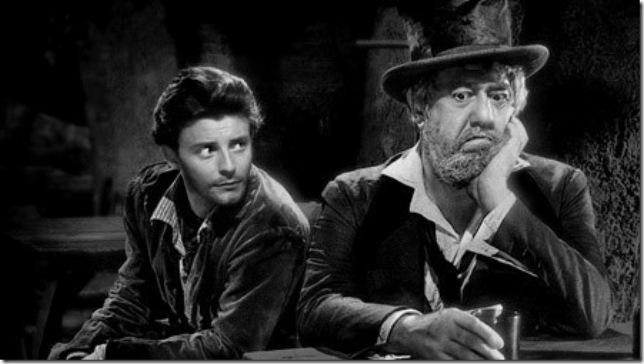
The humor in Beauty and the Devil (Cohen Media, $29.99 Blu-ray, $21.98 DVD), released eight years later, is darker but no less present, in one of the most memorable screen adaptations of Goethe’s Faust. This time, Faust is a doddering university professor, retiring after 50 regretful years, and Mephistopheles is the rakish young devil offering him youth in return (eventually) for, you know … his soul. Professor Faust takes the offer and soon finds himself in a peculiar business arrangement with his satanic new frenemy, who hangs around him always, like a hungry mosquito. They become devious alchemists, selling scientific secrets to the military-industrial complex and working together to win a princess’s heart for Faust, who tries to balance his insatiable greed with his attempts to outfox the devil.
As played, mostly, by Michel Simon, this Mephistopheles is a bumbling villain, an entertaining caricature that’s of a piece with this bold adaptation, in which moral calculations are secondary to the dreamlike adventure of it all. There are unforeseen twists — not easy to accomplish in such a familiar narrative — as well a haunting and radically shot sequence in which Faust is granted an onrushing view of his entire future. I don’t know how much Goethe would approve, but for cinephiles, it’s quite a feast.
The Hitch-Hiker: For years, cynics have griped that the only reason Kathyrn Bigelow became the first woman to win a Best Director Academy Award, for 2008’s The Hurt Locker, is because she made a doggedly male picture, in a male genre — like she was Sam Peckinpah with a vagina. This is insultingly reductive but perhaps correct, considering how patriarchical Hollywood remains, even in the new millennium.
It’s hard to imagine how the establishment characterized Ida Lupino’s The Hitch-Hiker (Kino, $26.98 Blu-ray) 60 years ago, when the Hollywood starlet became the first woman to direct a film noir picture. The Hitch-Hiker may even be manlier than The Hurt Locker; there’s not a single woman in the cast of this minimalist, nerve-racking thriller, a bilingual desert noir that should have done for hitchhiking what Psycho did for showers.
Lupino’s style was almost Bressonian in its economy of sound and image, if decidedly more commercial in its plotting. The first image is a text panel stating, “This is the true story of a man and a gun and a car,” establishing the direct, punchy, monosyllabic diction of pulp fiction that will carry the movie through the next lean, mean 71 minutes.
The great character actor William Talman plays Emmett Myers, a notorious hitchhiking serial killer based on the real-life spree murderer Billy Cook. He hitches a ride with a couple of middle-aged men out on the town for some fun in Mexicali, and off we go, across jagged and unforgiving Southwestern terrain, with the two poor saps (Edmond O’Brien and Frank Lovejoy) working to stymie their captor with incremental roadblocks and leave metaphorical bread crumbs for the FBI before Myers makes it on a ferry to Sonora and his ostensible freedom. The Hitch-Hiker slackens just a little during the rote police investigation scenes, but it crackles every second Talman is on camera as the devil incarnate: unctuous, unshaven and weary, with tousled hair and a lazy eye that never stops penetrating his hostages’ every fear, even when he’s sleeping.
The Uninvited: Roderick and Pamela (Ray Milland and Ruth Hussey), the siblings who stumble upon an extravagant, abandoned aand shockingly affordable mansion in 1944’s The Uninvited (Criterion, $20.69 Blu-ray, $14.49 DVD), clearly don’t know their way around a haunted house. Freezing-cold rooms curiously locked, flowers that wilt on their own, dogs that bark at menaces only they can see, unexplained scents and creepy overnight moaning — this place has them all, gradually testing the new tenants’ mettle, patience and sanity in a crazy, gradually evolving mystery about two rival ghosts and their battle over a vulnerable (live) girl (Gail Russell). Luckily, director Lewis Allen does know his way around such spooky action at a distance, bathing his eerie drama in shadows, candlelight and hushed sounds for an ambience-rich experience.
Some of the film’s elements, like the campy performance of Cornelia Otis Skinner, undercut the seriousness of the venture. As the transparently devious proprietor of a convalescence center, Skinner looks prematurely embalmed — a face-lifted cadaver with an impervious helmet of raven-colored hair and a perpetual mien of ghastly malice.
Elsewhere, you’ll have to endure a few stretches of torpid melodrama and flaccid comedy to get to the more sophisticated stuff, but the atmosphere will keep you enthralled — there’s no wonder it won an Academy Award for its black-and-white cinematography — and it could show the jittery, pandering scaremongers of today’s paranormal TV shows a thing or two about genuine suspense. The séance scene is dynamite.
Supplements are minimal for a Criterion disc, the best of them being a visual essay by director Michael Almereyda that wanders far off the reservation of The Uninvited into the back stories, personalities and filmographies of Ray Milland and Gail Skinner, creating esoteric and compelling connections.
Maniac: Elijah Wood has never delivered a performance as chilling or literally self-effacing as his glassy-eyed serial killer in Frank Khalfoun’s Maniac (IFC, $10.96 Blu-ray, $9.96 DVD). A remake of William Lustig’s 1980 slasher touchstone of the same name, Maniac is shot entirely from the point of view of Wood’s Frank Zito, a Los Angeles mannequin restoration artist by day, stalker and scalper of attractive women by night. We see his face, charming with a sinister subtext, only a few times in mirror reflections, spending most of the film uncomfortably inhabiting his clothes and psyche.
Maniac has some of the problems shared by the low-rent grindhouse films of the ’70s and ’80s, namely the extent to which the cards seem ludicrously stacked in the favor of the killer to keep killing. There are no police, no family members of Frank’s victims, no people, period, in any of the vast public places with which the creepy little man with the perpetual bloody knuckles (nobody sees that as a red flag, either) chases his prey.
Rationality may be dead on arrival, but this a terrifyingly gruesome experience nonetheless.
It’s more brutal and unforgiving than most of what passes for mainstream American horror, while harkening to the plot points of some of its forbears, like Hitchcock’s Psycho and Roger Corman’s A Bucket of Blood. And the continuous POV risk pays off in spades; while I’m not convinced the movie uses the device for self-critique — acknowledging the camera as torture device, etc. — it greatly enhances the palpability and inescapability of its terror.
Byzantium: Neil Jordan, who directed the popular precursor to the modern vampire mythos of the Aughts in 1994’s Interview With the Vampire, returns unsuccessfully to the bloodsucker genre with his latest drama, Byzantium (MPI, $24.99 Blu-ray, $9.99 DVD), an appropriate title considering the arduous meanderings of its story. Gemma Arteron and Saoirse Ronan play “sisters,” or so we’re told, who share a secret from the rest of the world — a secret that has something to do with the fact that they’ve looked to be about 20 and 16 years old, respectively, for centuries. The prior hooks for money, then feeds on the hapless johns; the latter is more sentimental and only sucks the life out of “willing” victims. They flit from town to town, not staying long enough to alert the authorities to their trails of blood, and for most of Byzantium, they crash at an antiquated hotel run by a naïve, good-hearted schlub (Daniel Mays) who has just lost his mother — until their past comes back to haunt them.
This is where Byzantium, which by then was a mildly interesting vampire art film bolstered by Jordan’s talent for bold landscapes and other macro visuals, wanders hopelessly into self-important, hackneyed gothic flashbacks, in an exhausted effort to explain everything about the sisters’ origins. Did it ever cross the filmmakers’ minds that we accept vampirism these days, that we didn’t need to know all that convoluted back story … that, perhaps, the story was stronger for its initial mystery? Apparently not. It’s difficult to make a vampire film that is not only unscary but also abjectly boring, but Jordan and his crew have pulled it off.
Internal Affairs: This cop drama from 1990 (Paramount/Warner, Blu-ray, $16.98) has a few things going for it: a young, attractive cast, a respected director (Mike Figgis, later of Leaving Las Vegas) and a predictably hyperbolic blurb from Larry King on its box art: “The best thriller I’ve seen in years.” This sort of praise sounds especially silly 23 years later, judging by the film’s stupidly over-the-top climax and uneven tone, pitched somewhere between the gritty class of Law & Order and B-movie dirtbaggery.
Seedy, vulgar and violent, and containing the kind of superfluous nudity that peppered the rough-and-tumble filmmaking of the period, Internal Affairs pits Andy Garcia’s IA officer Raymond Avilla — the guy who polices the policemen — against Richard Gere’s crooked cop Dennis Peck, whose corruption is so transparent as to be almost laughable.
Garcia brings a memorably steely-eyed intensity here, but we get a curiously listless performance from Gere; for a sociopath, his character is charmless and never fully believable.
Where the picture succeeds is in breaking down Raymond’s moral code, turning him into the aggressive, unprincipled yin to Peck’s yang, the mouse and cat becoming one. And some of the confrontations are especially well-done, emitting the vague redolence of old Sam Fuller pictures. On a side note, this movie has to have some of the most shameless product placement I’ve ever seen; in some shots, the star is not Garcia or Gere but Pepsi-Cola.
